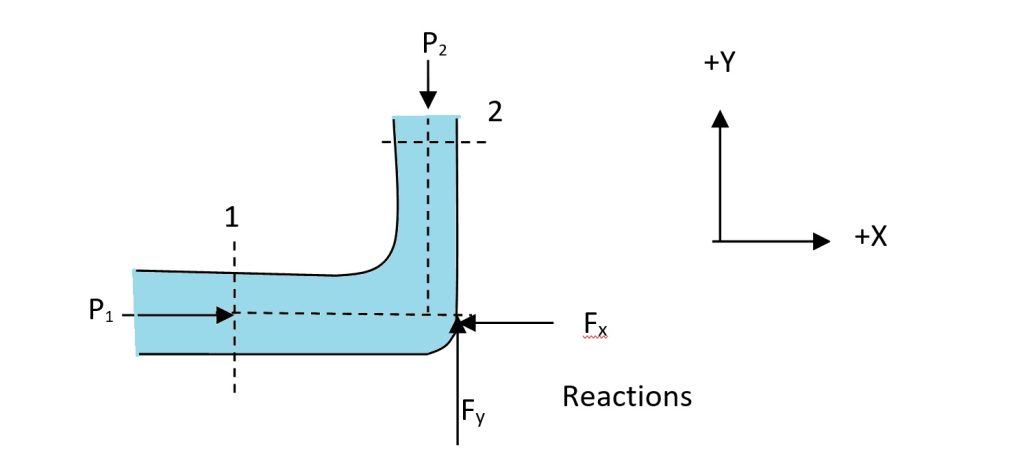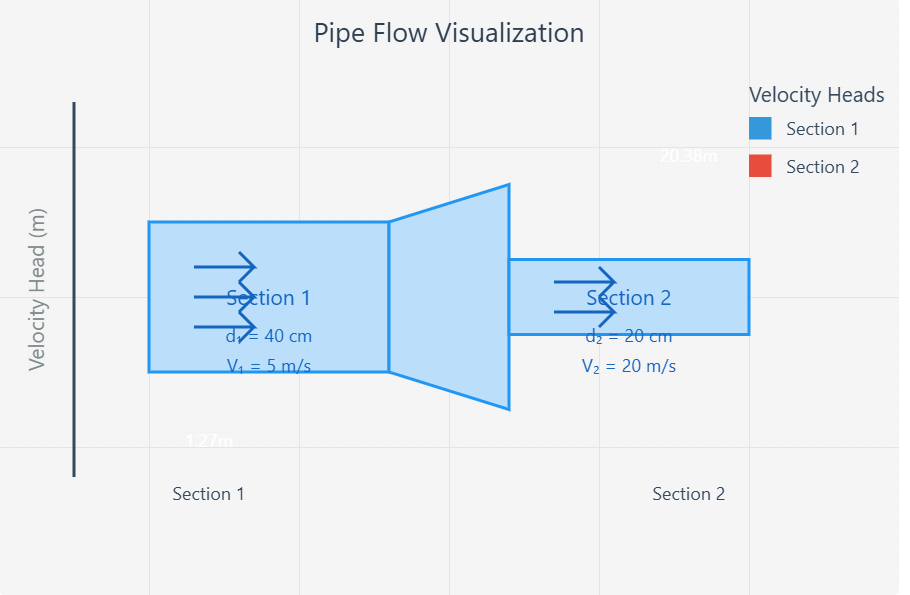Problem Statement
A cubical tank has sides of 1.5 m. It contains water for the lower 0.6 m depth. The upper remaining part is filled with oil of specific gravity 0.9. Calculate for one vertical side of the tank: (a) total pressure, and (b) position of centre of pressure.
Given Data
- Side of cubical tank, \( L = 1.5 \, \text{m}\)
- Depth of water, \( h_2 = 0.6 \, \text{m}\)
- Depth of oil, \( h_1 = 1.5 - 0.6 = 0.9 \, \text{m}\)
- Width of side, \( b = 1.5 \, \text{m}\)
- Sp. gr. of oil = 0.9, so its density \( \rho_1 = 900 \, \text{kg/m}^3 \)
- Density of water, \( \rho_2 = 1000 \, \text{kg/m}^3 \)
Pressure Diagram
The pressure distribution on the side of the tank due to the layered oil and water.

Solution
(a) Total Pressure (Force)
First, calculate the pressure intensities at the oil-water interface (D) and at the tank base (B).
Next, calculate the force from each section of the pressure diagram, split into a top triangle, a central rectangle, and a bottom triangle.
The total pressure (force) is the sum of these component forces:
(b) Position of Centre of Pressure (\(h^*\))
The position of the centre of pressure is found by taking moments of the component forces about the free surface (A).
The total moment is the sum of individual moments:
The centre of pressure \(h^*\) is the total moment divided by the total force:
Total Pressure (Force): \( F \approx 15163.8 \, \text{N} \)
Centre of Pressure: \( h^* \approx 1.005 \, \text{m} \) below the free surface
Explanation of Concepts
Total Pressure on a Vertical Surface with Layered Liquids: When a vertical surface is in contact with multiple immiscible fluids, the total hydrostatic force is calculated by considering the pressure distribution of each fluid. This is often visualized with a pressure diagram, where the force corresponds to the area of the diagram multiplied by the width of the surface. The diagram is broken down into simpler geometric shapes (triangles and rectangles) to calculate the force and its point of application for each section.
Physical Meaning
The vertical side of the cubical tank experiences a total force of about 15,164 N, which is roughly the weight of a 1.5-ton object. This force is not applied uniformly but is concentrated lower down on the wall due to the increasing pressure with depth and the higher density of the water at the bottom.
The single point where this entire force can be considered to act, the centre of pressure, is located 1.005 m from the top surface of the oil. This is about 10.5 cm below the oil-water interface (which is at 0.9 m). The tank's design, particularly its structural reinforcement, must account for this specific load point to prevent the wall from bending or failing.





